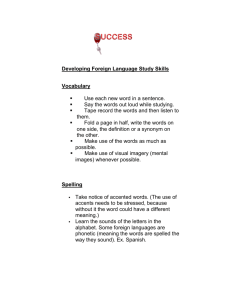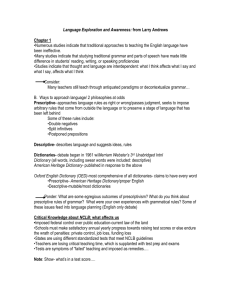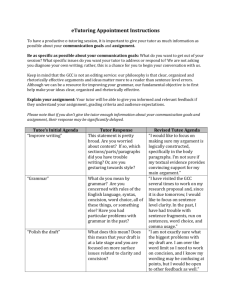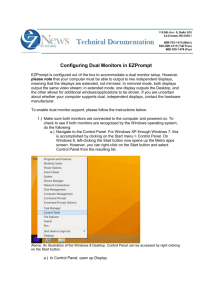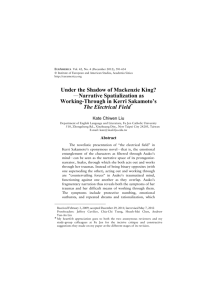The different roles of a teacher
advertisement
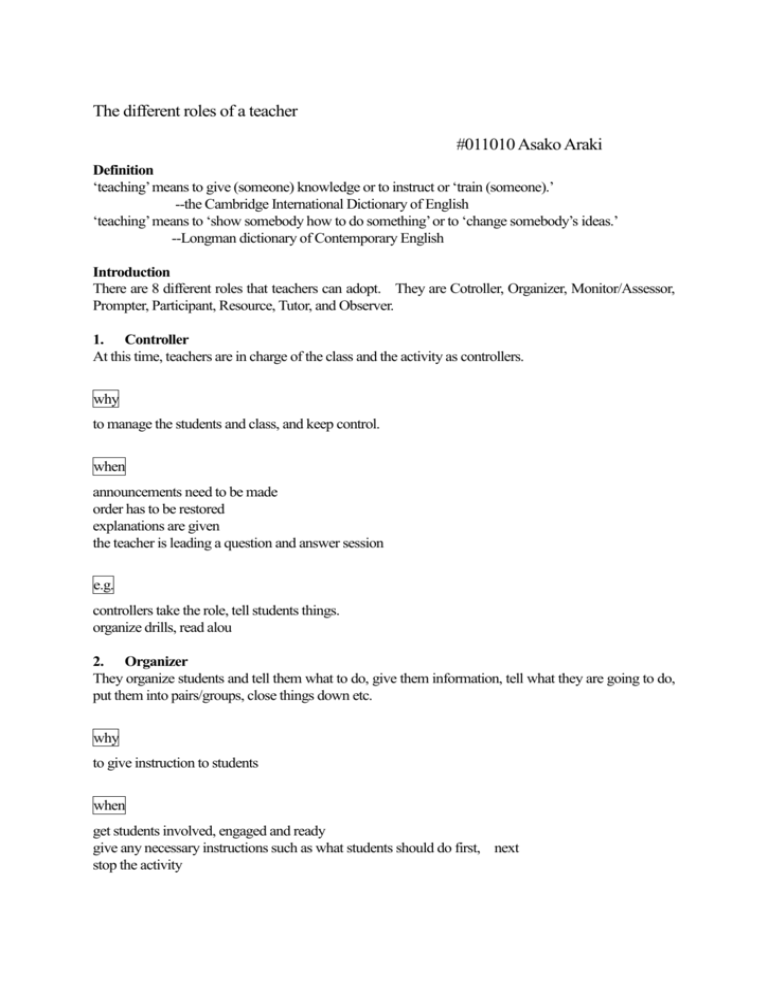
The different roles of a teacher #011010 Asako Araki Definition ‘teaching’ means to give (someone) knowledge or to instruct or ‘train (someone).’ --the Cambridge International Dictionary of English ‘teaching’ means to ‘show somebody how to do something’ or to ‘change somebody’s ideas.’ --Longman dictionary of Contemporary English Introduction There are 8 different roles that teachers can adopt. They are Cotroller, Organizer, Monitor/Assessor, Prompter, Participant, Resource, Tutor, and Observer. 1. Controller At this time, teachers are in charge of the class and the activity as controllers. why to manage the students and class, and keep control. when announcements need to be made order has to be restored explanations are given the teacher is leading a question and answer session e.g. controllers take the role, tell students things. organize drills, read alou 2. Organizer They organize students and tell them what to do, give them information, tell what they are going to do, put them into pairs/groups, close things down etc. why to give instruction to students when get students involved, engaged and ready give any necessary instructions such as what students should do first, next stop the activity e.g. tell students how much time they have got and exactly when they should start. Tell students how to put their. 3. Monitor/ Assessor They offer feedback, and correction and grade students in various ways. They just listen and then find problems that students have. why to allow the teachers to know where students are having problems with their learning. when Teachers assess when the students are able to understand something or when they can use a language point well. e.g. When teachers find that students have problems with something, they point it, maybe at that time, especially when the students are focused on accuracy, or maybe later, for example in a fluency activity. 4. Prompter They allow students to work on their fluency. That is to say, they leave students and let them work things out for themselves. why To encourage the students to think independently. when Students lose the thread of what is going on. e.g. Teachers want students to work out for themselves, so they do not tell the answer and put out students’ knowledge by using questions. 5. Participant The teacher actually joins the students in an activity not as a teacher but also as a participant. why To do things better from inside instead of always having to prompt or organize from outside the group. when Students have discussions, role-play or group decision-making activities. e.g. When students have discussions or games, teachers join it not to dominate them. Teachers help students to research. 6. Resource Passive-- wait for students to ask Active—giving information to teachers Teachers do not control or prompt the students, but they help the students when they ask them. why Students do not need teachers much when they write something or prepare for a presentation. However, they do not know everything so they need the teacher’s help as a resource like grammar or vocabulary then. when When students need teachers’ help. e.g. Teachers give information, such as teaching grammar, explaining vocabulary and showing how to write essay. 7. Tutor A tutor combines the role of prompter and resource. It is a closer relationship than that of a controller, and personal. why To give personal instruction.(not to a class) when It is based on individual need. e.g. When students are working in small groups or in pairs, teachers can go round the class, and teachers stay with a particular groups or individual for a while and offer the sort of general guidance. 8. Observer Teachers observe what students do so that they can give them useful group and individual information. why to assess learning to give feedback to judge the success of the different materials and activities that They take into lessons so that they can, if necessary, make change in the future. when They should observe students when they have oral communicative activities. e.g. When we have free conversation time in Oral Communication class, teachers become observers and listen to what students say to assess their ability, for later teaching. Conclusion As we saw, teachers do not play only one role, but do any of these 8 roles depending on situation and the aim. Teachers need to think what role they have to adopt when students do something or need their help. The different roles of a teacher #011010 Asako Araki Definition ‘teaching’ means to give (someone) knowledge or to instruct or ‘train (someone)’ -----the Cambridge International Dictionary of English ‘teaching’ means to ‘show somebody how to do something’ or to ‘change somebody’s ideas’ -----Longman dictionary of Contemporary English There are 8 teacher’s roles to teach students. role why to manage the 1Controller students and class, and keep control. to give instruction to 2Organizer students 3Monitor/ Assessor 4Prompter 5Participant 6Resource 7Tutor when announcements need to be made, explanations are given get students involved, engaged and ready e.g. controllers take the role, tell students things tell students how much time they have got and exactly they should start When teachers find that students have problems with something, they point it, maybe at that time, especially when the students are focused on accuracy, or maybe later, for example in a fluency activity. Teachers want students to work out for themselves, so they do not tell the answer and put out students’ knowledge by using questions. to allow the teachers to know where students are having problems with their learning Teachers assess when the students are able to understand something or when they can use a language point well. to encourage the students to think independently students lose the thread of what is going on to do things better from inside instead of always having to prompt or organize from out side the group Students do not know everything so they need the teacher’s help as a resource like grammar or vocabulary then To give personal instruction.(not to a class) Students have discussions, role-play or group decision-making activities When students have discussions or games, teachers join it not to dominate them. When students need teachers’ help. Teachers give information, such as teaching grammar, explaining vocabulary and showing how to write essay. It is based on individual need. When students are working in small groups or in pairs, teachers can go round the class, and teachers stay with a particular groups or individual 8Observer to give feedback They should observe students when they have oral communicative activities. for a while and offer the sort of general guidance. When we have free conversation time in Oral Communication class, teachers become observers and listen to what students say to assess their ability. Let’s check your understanding!! Q: What’s the teacher’s main role in these situations? 1. Helping students individually with their work. 2. Walking round the class in discussion time to see how students are getting on with the task. 3. Joining the students in a game or discussion. 4. Teaching something, or giving information. 5. Telling students how to play a game, or what to do for homework. 6. Encouraging the students to work out problems by themselves, and to suggest way to help them do this. 7, Deciding how well the students can perform a task. (e.g. a grammar activity or a speaking activity) 8. Telling students where to sit, how to make groups and so on. Please answer the below chart. 1 2 3 4 5 6 7 8


